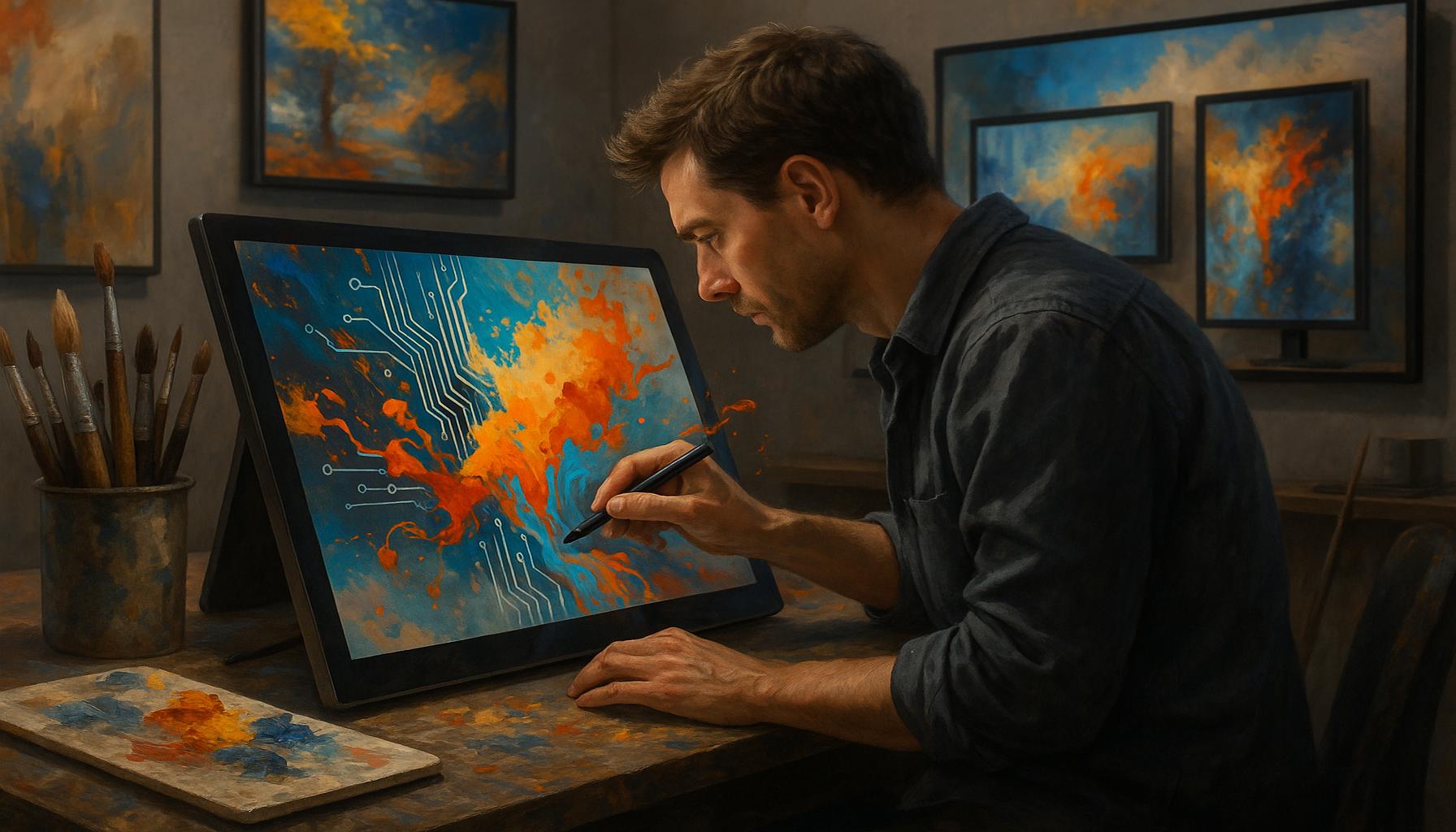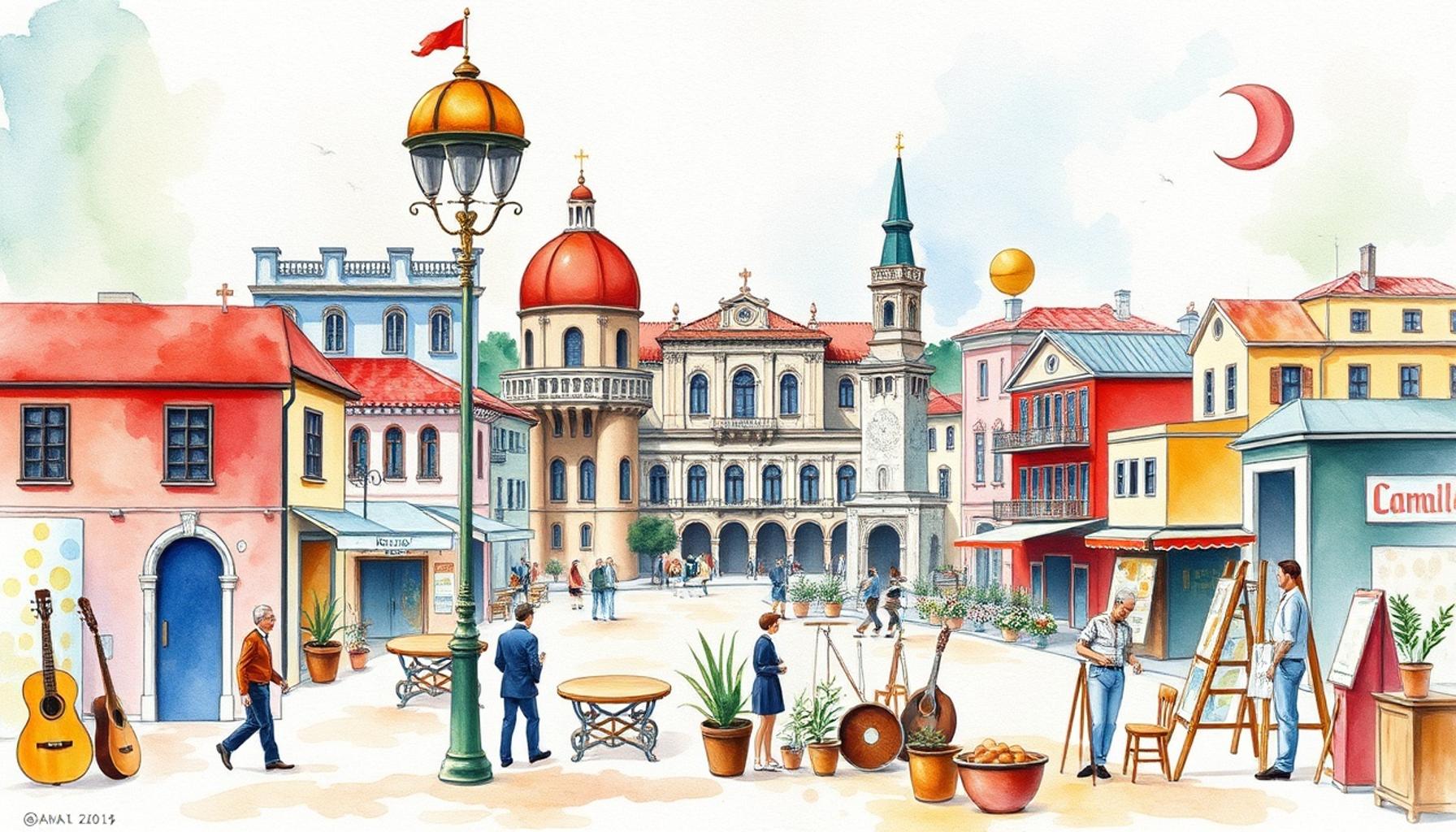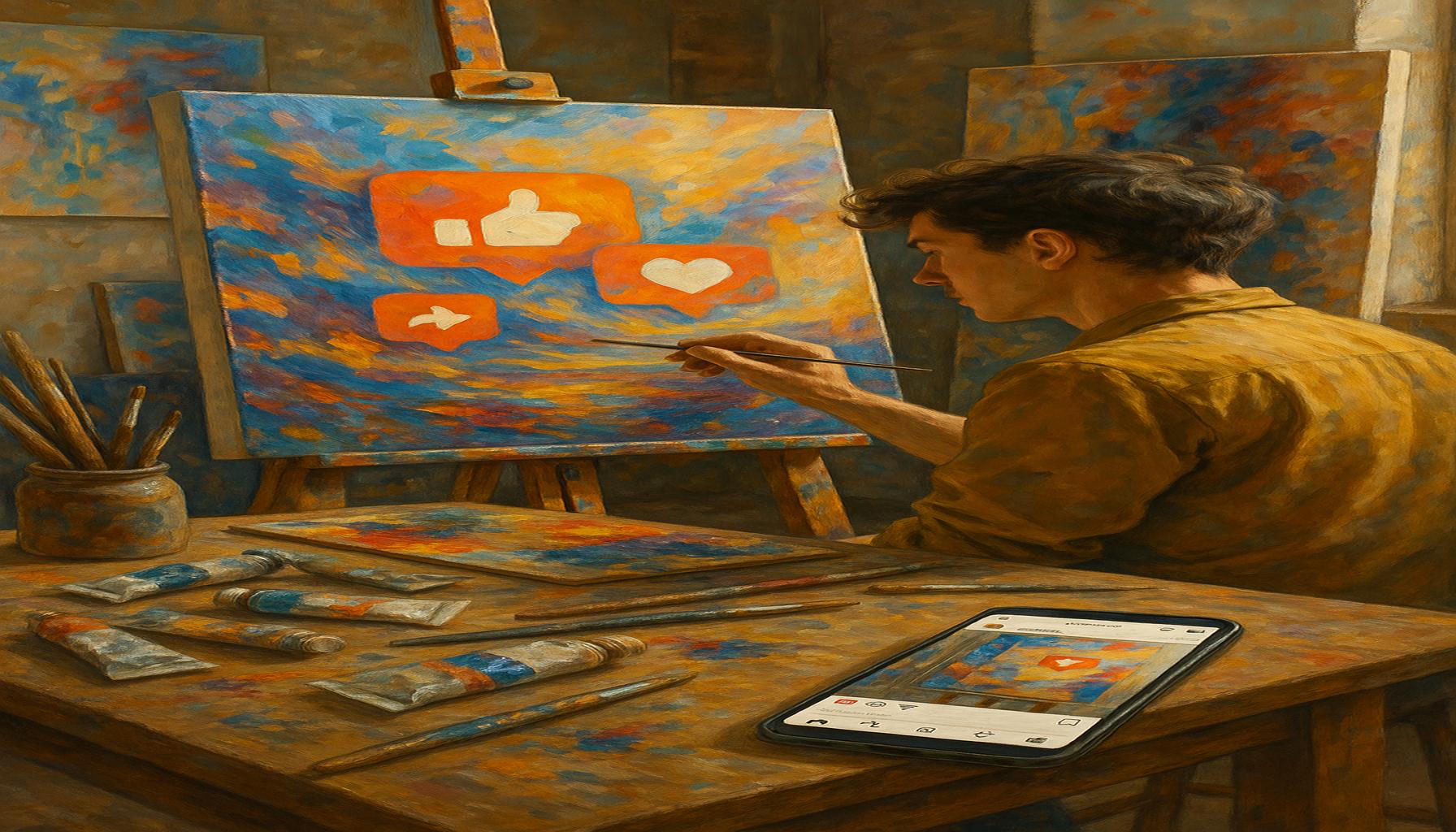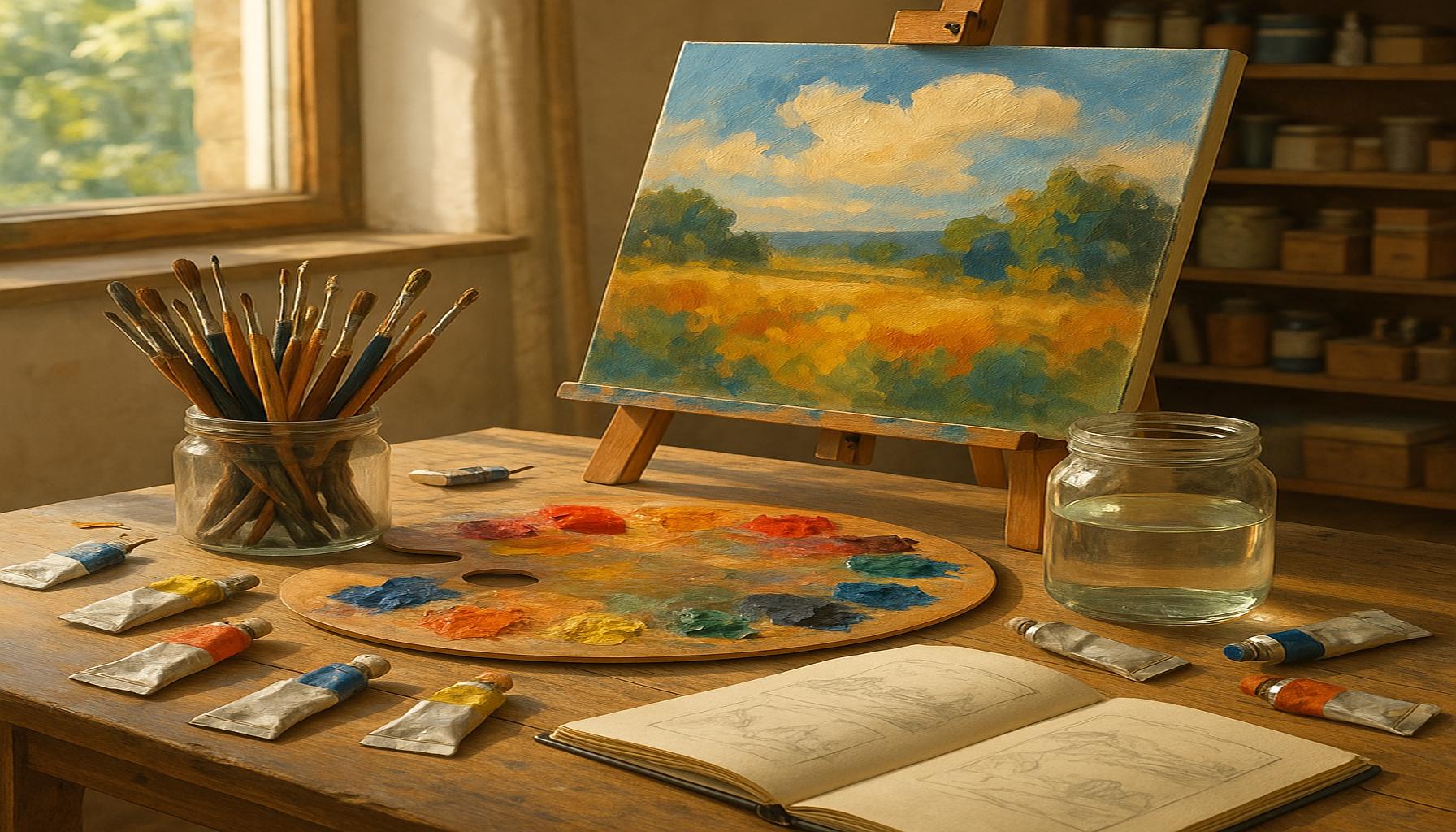Exploring the Intersection of Technology and Painting: Digital Art in the Modern Age

The Impact of Digital Art on Creativity
In an age increasingly defined by technology, the world of art has undergone a significant transformation. Digital art represents a confluence of classic artistic forms and modern technological innovations, creating a myriad of opportunities for artists and enthusiasts alike.
Tools at the Artist’s Fingertips
The introduction of advanced tools has revolutionized how artists create and express themselves. Graphic tablets, such as Wacom and Huion, provide a tactile interface that mimics traditional painting or drawing, while software like Adobe Photoshop and Procreate offer an extensive array of features, allowing artists to experiment with textures, colors, and effects in ways that were previously unimaginable. For example, Procreate allows artists to use hundreds of brushes that can be customized, empowering them to craft highly intricate works of art that combine painting and illustrative techniques.
Diversity of Styles
The diversity of digital artwork is equally impressive, encompassing styles that cater to all tastes. Pixel art, reminiscent of retro video games, has surged in popularity, enabling artists to capture nostalgia while appealing to modern aesthetics. In contrast, 3D modeling creates immersive experiences in areas such as gaming and virtual reality, engaging audiences in captivating narratives. Additionally, vector illustrations leverage mathematical equations to create graphics that are infinitely scalable without losing quality, making them indispensable for advertising and branding in today’s digital marketplace.
Enhanced Accessibility
One of the most profound impacts of digital art lies in its accessibility. The internet acts as a vast gallery, allowing artists from any background to showcase their work without the barriers of physical space. Platforms like ArtStation and DeviantArt offer artists not only a space to display their creations but also a chance to sell their art to a global audience. This democratization means that an aspiring artist from a small town in the United States can gain recognition alongside established names, fostering a rich tapestry of artistic voices.
Fostering Collaboration
Moreover, the digital art community thrives on collaboration. Artists can connect with peers worldwide via social media platforms like Instagram and Twitter, sharing techniques, providing feedback, and even co-creating pieces. This collaborative spirit can lead to innovative projects that reflect diverse perspectives, advancing not just individual growth but also the art form itself.
Questions of Authenticity and Value
While the plethora of opportunities offered by digital art is exciting, it also leads to critical questions about the authenticity and value of artwork in the age of technology. How do we define an original piece in a world where digital reproductions can be made effortlessly? Additionally, as artists navigate the transition from traditional canvases to screens, the concept of ownership becomes blurred, particularly with the rise of NFTs (Non-Fungible Tokens), which promise to encode digital ownership into the blockchain.
In exploring these complex dynamics, we uncover a narrative rich in potential and challenging in execution. The fusion of technology and creativity in digital art not only redefines how we perceive artistic expression but also shapes cultural dialogues worldwide, encouraging us to reconsider what it means to be an artist in the modern age.
DISCOVER MORE: Click here to delve into the world of creative therapy
New Dimensions of Expression
As digital art continues to evolve, it is reshaping how artists approach creation, pushing the boundaries of traditional painting methods and opening up new dimensions of expression. Gone are the days when artists relied solely on brushes and canvases; today, they wield a series of sophisticated digital tools that enhance their creative possibilities.
The Role of Software Innovation
Software innovation is at the heart of the digital art revolution. Programs such as Adobe Illustrator and Corel Painter are tailored for different styles and techniques, offering artists versatile environments that cater to their unique creative processes. These applications allow for intricate layering, enabling artists to build their works piece by piece, adjust colors on a whim, and even implement advanced techniques like cloning and masking with ease. It is not uncommon for artists to blend photography with digital painting, creating photorealistic textures interwoven with imaginative elements, ultimately resulting in striking visual narratives.
Platforms and Community Building
Moreover, digital platforms have played a crucial role in fostering community among artists. Websites dedicated to digital art provide spaces for developers to share their knowledge, tutorials, and even artwork critiques. Communities on platforms like Behance or Dribbble encourage artists to engage with peers, leading to collaborative efforts that may not have been possible in a traditional studio setting. The #digitalart movement on social media channels, especially Instagram, showcases the fast-paced growth and influence of this medium, with hashtags allowing for easy discovery and virality, further amplifying an artist’s reach.
Insights into Hybrid Art Forms
Digital art also encourages the emergence of hybrid art forms, where traditional and digital techniques coalesce. For instance, artists often combine hand-drawn elements with digital enhancements, creating unique styles that reflect both the authenticity of handcrafting and the precision of digital manipulation. Here are a few prominent hybrid styles that have gained traction:
- Mixed Media: Artists layer various media, such as painting, drawing, and digital elements, to create compelling multidimensional works.
- Augmented Reality (AR) Art: This interactive medium allows artists to incorporate digital content that can be viewed through smartphone applications, breaking free from static presentation.
- Digital Collage: Combining different digital images and textures, artists can create intricate compositions that challenge traditional definitions of art.
This fusion not only redefines the visual landscape but also expands the narrative possibilities within art, inviting viewers to explore ongoing stories told through layers of texture, color, and technique.
The Global Influence of Digital Art
Digital art transcends geographical boundaries, offering a platform for cultural exchange where artists from diverse backgrounds contribute to a vibrant global dialogue. In the context of the United States, artists are using digital mediums to tackle social issues, express identity, and craft narratives that resonate with wider audiences. For example, movements such as Black Lives Matter have found a significant voice through digital art, with artists harnessing social media to amplify their messages visually, thus solidifying digital platforms as pivotal spaces for activism.
The impact of technology on painting and the creation of digital art continues to unfold, presenting endless opportunities for innovation and exploration. As artists embrace this new realm of possibilities, they contribute to an ongoing conversation that challenges traditional norms and redefines the essence of creative expression in the modern age.
In the vibrant realm of digital art, the convergence of technology and traditional painting techniques has birthed a new breed of creativity. As artists harness the power of digital tools, they are not only expanding their palettes but also redefining the very essence of artistic expression. The accessibility of digital art platforms enables artists to experiment without the constraints of physical media, allowing for spontaneous creativity that can be easily altered or discarded.Moreover, the adoption of virtual reality (VR) and augmented reality (AR) technologies in painting has changed the viewer’s experience entirely. Artists can now create immersive environments that transport audiences into their artwork, bridging the gap between creator and observer. This evolution enhances interactivity, inviting viewers to engage with art in ways previously unimaginable, and offering a deeper connection to the artwork.Additionally, social media platforms have revolutionized the way art is disseminated and appreciated. Artists are now able to showcase their digital creations to a global audience instantly, challenging traditional exhibition methods. This shift not only democratizes art but fosters collaborations and dialogues among artists, curators, and collectors worldwide. As the lines between technology and traditional painting blur, we’re witnessing an unprecedented transformation in the art world that promises to continue evolving in the future.To encapsulate the various dimensions of this dynamic intersection, here’s a concise yet informative table outlining some benefits of embracing digital art:
| Advantages | Key Features |
|---|---|
| Creativity & Flexibility | Provides artists the ability to create, edit, and experiment without limitations. |
| Global Accessibility | Artists can reach a worldwide audience, sharing their digital canvases and creations instantly. |
Exploration of these themes not only reveals the significant transition within the art community but also raises intriguing questions about the future of creative expression in a technology-driven world. As digital art flourishes, it challenges conventions and inspires a deeper discourse on the role of technology in shaping artistic endeavors.
DIVE DEEPER: Click here to explore the art of storytelling
The Impact of AI and Machine Learning
As technology advances, artificial intelligence (AI) and machine learning are becoming integral components in the realm of digital art. This innovative approach has the potential to inspire artists while simultaneously transforming the creation process. AI-powered tools, such as DALL-E and DeepArt, enable artists to create stunning visuals by simply inputting text prompts or utilizing existing images. These tools can generate unique artworks that blend various styles and techniques, providing artists with new creative avenues.
Reimagining Creativity with AI
The intersection of AI and art challenges the conventional understanding of creativity. Artists can now collaborate with algorithms that learn from their specific styles and preferences, enriching their creative toolbox. For instance, using tools like RunwayML allows artists to experiment with generative design, simulating endless variations of their artwork. This shift encourages artists to think beyond conventional boundaries and consider how technology can complement their creative instincts rather than replace them.
Furthermore, this technology opens up exciting possibilities beyond simple image generation. Artists can now engage with real-time interactive artworks through AI, where viewer interactions can modulate visual responses. This dynamic exchange makes digital art more immersive and responsive, enhancing audience engagement.
Preserving Traditional Techniques
Contrary to the fear that digital art might overshadow traditional painting techniques, the two mediums are increasingly intertwined. Digital painting software often replicates the textures and techniques of traditional media, allowing artists to mimic watercolor or oil effects. For example, many artists who paint digitally will often utilize brushes that emulate the strokes of real paintbrushes, enabling them to maintain a connection to their traditional roots.
This blurring of lines also paves the way for unique educational opportunities, as artists can now combine both traditional and digital methods in the classroom. Institutions across the United States are offering hybrid courses, where students gain exposure to both digital animation and classical painting techniques. This not only diversifies skill sets but also fosters a more comprehensive understanding of the evolution of art in the modern age.
The Commercial Landscape of Digital Art
The rise of digital art has surged in the commercial sector, influencing advertising, video game design, and animation in unprecedented ways. Companies are increasingly relying on digital artists to create distinctive branding elements, marketing materials, and product visualizations. Prominent brands like Nike and Adobe have turned to digital artists for fresh perspectives, recognizing the power of unique visuals to engage consumers.
The digital art marketplace, particularly with the advent of Non-Fungible Tokens (NFTs), has created a new revenue stream for artists. This emerging market allows artists to sell their digital creations as unique, verified assets on blockchain technology, ensuring authenticity and ownership. Digital artworks are being auctioned off for staggering amounts, thus bringing significant attention to the talent within the digital art community. As the acceptance and allure of digital art continue to grow, artists are carving out new career paths within this realm.
In exploring the intersection of technology and painting, it becomes clear that digital art is not merely a trend but a redefinition of artistic possibilities. Its proliferation in educational, commercial, and social spaces only enhances its significance and relevance in the contemporary art world, illustrating a compelling evolution in how art is created, shared, and experienced. As artists navigate this modern landscape, the future promises further innovation and integrative practices that will redefine how society perceives art in the digital age.
DISCOVER MORE: Click here to dive deeper into creative writing
Conclusion
As we have journeyed through the intersection of technology and painting, it is evident that digital art stands as a transformative force in the modern age. With tools that harness the power of AI and machine learning, artists today are empowered to explore uncharted creative territories, fostering collaborations that challenge traditional notions of artistry. The combination of digital tools with traditional techniques not only preserves the rich history of art but also enriches it, creating a vibrant dialogue between past and present.
The commercial landscape is evolving rapidly, as digital art becomes a vital component in sectors ranging from advertising to entertainment. The emergence of Non-Fungible Tokens (NFTs) signifies a groundbreaking shift, enabling artists to monetize their work in ways that were previously unimaginable. This new marketplace not only highlights the value of creativity but also emphasizes the need for authenticity in a digital world.
Looking ahead, the potential for digital art seems limitless. As an evolving medium, it allows for new educational paradigms, commercial opportunities, and artistic explorations that continually redefine the scope of what art can be. As we embrace these advancements, it is crucial to consider how they will shape the future of creative expression and cultural connections. In this dynamic interplay between technology and painting, each stroke tells a story of innovation, resilience, and a reimagined art world awaiting discovery.



